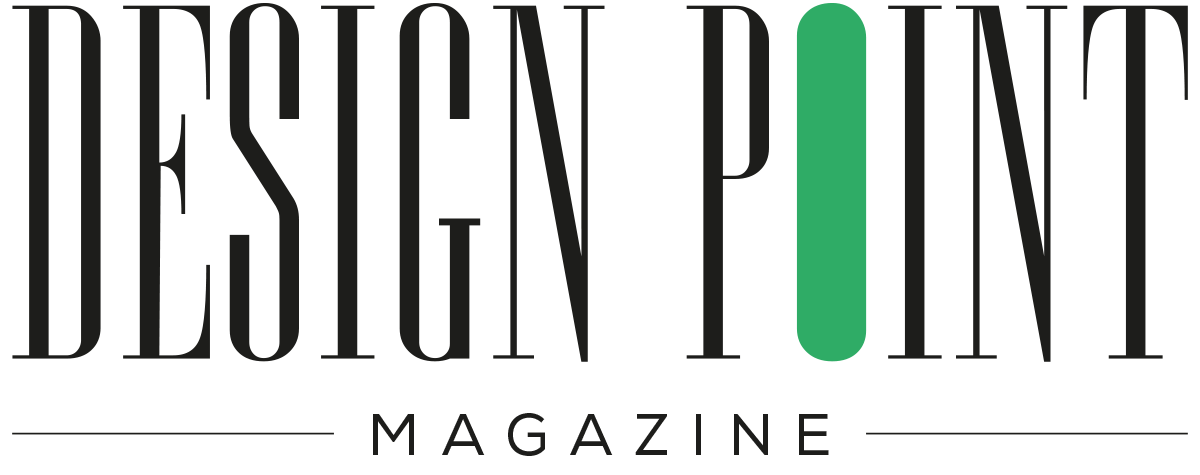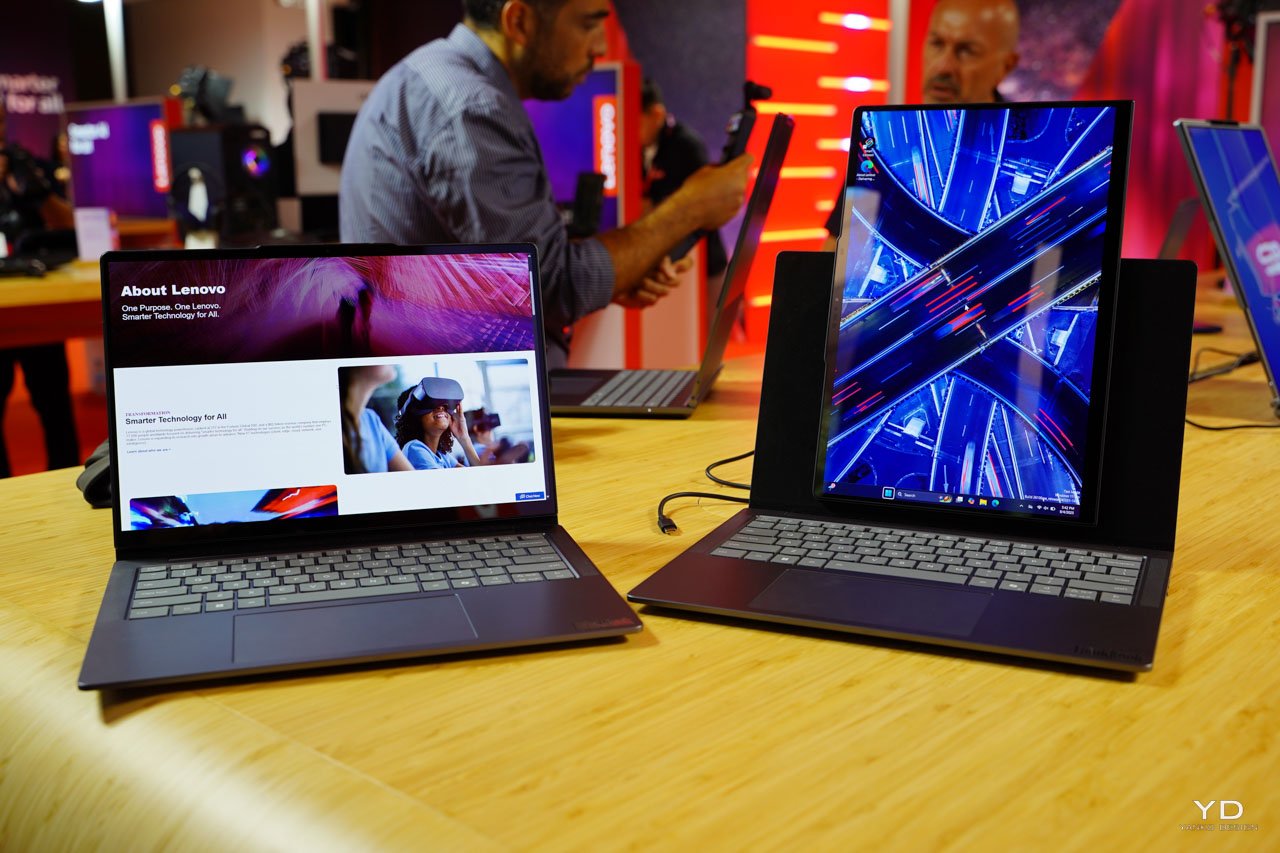Reviewing lengthy documents, coding on vertical monitors, or scrolling through social media feeds creates the same frustration every day. Your laptop screen forces you into horizontal viewing while the content screams for vertical space. You crane your neck, squint at cramped text, and constantly scroll through information that would fit perfectly if only your screen could rotate. This daily annoyance affects millions of professionals, students, and creators who’ve adapted their workflows around technology’s limitations rather than the other way around.
Designers: Lenovo
At IFA 2025 in Berlin, Lenovo addresses this fundamental mismatch with the most comprehensive product portfolio the company has ever announced at a single event. The “Lenovo ThinkBook VertiFlex Concept” leads an ambitious lineup that includes the 24-core ThinkPad P16 Gen 3 mobile workstation, the groundbreaking 39.7-inch ThinkVision P40WD-40 curved ultrawide display, advanced Thunderbolt 5 smart docks, and an entire ecosystem of AI-powered business solutions. These announcements collectively demonstrate Lenovo’s commitment to “Enabling Smarter AI for All” through hardware that adapts to human workflows rather than forcing adaptation from users.
The VertiFlex Concept represents the first serious attempt to break the orientation paradigm that has defined laptop design since the category’s inception. Social media platforms, coding environments, document editing, and web browsing all benefit from portrait orientation, yet traditional laptops lock users into landscape mode, creating inefficient workflows and ergonomic strain.
VertiFlex Concept: Reimagining Laptop Display Design
The ThinkBook VertiFlex Concept centers on a 14-inch OLED touch display with 2.8K resolution (2880×1800) that pivots seamlessly between landscape and portrait orientations while maintaining the essential laptop form factor. The display delivers 400 nits peak brightness, 100% DCI-P3 color gamut coverage, and Dolby Vision support with a 90Hz adaptive refresh rate that automatically adjusts based on content and orientation.
Core specifications include Intel Core Ultra 7 processors (Series 2) with integrated Arc graphics and dedicated NPU delivering up to 47 TOPS for AI workloads. The system supports up to 32GB LPDDR5X-8533 memory and up to 1TB PCIe Gen4 NVMe SSD storage with dual M.2 slots for expandability. Despite its groundbreaking display technology, the concept maintains remarkable portability credentials with an ultra-slim 17.9mm thickness and lightweight 1.39kg construction.
Connectivity features include two Thunderbolt 4 ports, USB-A 3.2 Gen2, HDMI 2.1, 3.5mm audio jack, and Wi-Fi 7 with Bluetooth 5.4 support. The 65Wh battery provides up to 12 hours of mixed-use battery life, with rapid charging capability reaching 80% in 60 minutes through the included 90W USB-C adapter.
The swiveling mechanism operates through 360 degrees, allowing users to position the display at any angle between orientations without requiring locks or additional mechanisms. The vertical display mode transforms productivity workflows that naturally favor vertical formats, from split-screen multitasking and displaying code to reviewing documents.
The concept’s hardware engineering enables smooth rotation through a precision-balanced hinge system that maintains structural integrity while supporting the display weight across all orientations. Users can transition from horizontal laptop mode for traditional computing to vertical tablet-style orientation for reading, coding, or social media consumption without compromising the keyboard and trackpad functionality.
Advanced connectivity enables seamless integration through Lenovo Smart Connect technology, allowing smartphone tethering for file transfer and phone mirroring functionality while in vertical display mode. The concept incorporates intelligent software that automatically adjusts interface elements when users change orientations, recognizing pivoting and adapting screen layouts, application positioning, and user interface scaling. This software integration prevents the disjointed experience that often accompanies hardware innovation, ensuring the swiveling capability feels like a natural extension of the laptop’s functionality rather than a novelty feature.
ThinkPad P Series: Mobile Workstations Redefined
The newly redesigned ThinkPad P16 Gen 3 delivers unprecedented mobile workstation performance with Intel Core Ultra 200HX series processors featuring up to 24 cores and an integrated NPU for AI processing. This represents a significant leap from typical 8-16 core laptop processors, bringing desktop-class computing power to mobile form factors. The workstation pairs these processors with up to NVIDIA RTX PRO 5000 Blackwell graphics and 24GB VRAM in discrete GPU design, delivering maximum performance for graphics-intensive tasks from complex 3D rendering to AI development workloads.
Lenovo’s complete P Series lineup addresses diverse professional needs across multiple form factors. The ThinkPad P1 Gen 8 combines workstation power with ultra-premium mobility, featuring Intel Core Ultra processors (Series 2) and up to NVIDIA RTX PRO 2000 Blackwell generation graphics for content creators, game developers, and CAD specialists. The ThinkPad P16v Gen 3 offers powerful yet affordable performance with a sleek chassis design featuring 16:10 aspect ratio display, narrow bezels, and high screen-to-body ratio. The ThinkPad P14s Gen 6 and P16s Gen 4 represent the thinnest and lightest mobile workstations in Lenovo’s portfolio, combining premium performance with portability for professionals tackling complex workloads on-the-go.
These workstations integrate with Lenovo AI Developer, a full-stack AI development solution that combines leading open-source tools, AI libraries, and frameworks with superior workstation hardware. The ecosystem enables professionals to build, scale, and secure their AI workflows beyond everyday AI PC tasks to power advanced AI development workloads. Lenovo’s comprehensive AI PC Services portfolio, including AI Fast Start, Care of One, and AI PC Premier Support, helps businesses maximize productivity and achieve faster returns from every AI-ready PC through tailored onboarding, curated toolkits, and expert platform readiness support.
Professional Displays and Connectivity Revolution
The ThinkVision P40WD-40 curved ultrawide display engineers a superior visual experience for serious multitasking with breathtaking 5120×2160 resolution across a 39.7-inch display featuring 21:9 aspect ratio. The monitor delivers reliable color precision and rich contrasts, supported by 98% DCI-P3 color gamut and IPS Black technology, while the 2500R curved screen wraps professionals in immersive visuals for creative work, data analysis, or content consumption. Beyond visual excellence, the ThinkVision P40WD-40 functions as a productivity hub with Thunderbolt 4 one-cable docking solution, DisplayPort outputs, PD3.1 charging up to 140W, and 2.5G RJ45 Ethernet port.
The monitor achieves industry-leading efficiency as the first desktop monitor featuring 24 to 120 Hertz variable refresh rate, using up to 34% less power than ENERGY STAR 8.0 standards through DisplayPort Power Saving technology. This Lenovo-unique feature uses panel replay technology to dynamically adapt refresh rates without compromising visual quality, representing a significant advancement in professional display efficiency.
Lenovo’s new ThinkPad smart docks revolutionize workspace connectivity with cutting-edge Thunderbolt 5 performance. The ThinkPad Thunderbolt 5 Smart Dock 7500 delivers up to 120 Gbps bandwidth, driving up to 3 x 8K @ 60Hz displays plus 1 x 4K @ 60Hz, or ultra-smooth playback with 2 x 4K @ 240Hz and 2 x 4K @ 120Hz, while supporting up to 180W power delivery. The ThinkPad Thunderbolt 4 Smart Dock Gen 2 7500 supports up to 1 x 8K @ 60Hz or dual 4K @ 144Hz displays with up to 100W power delivery, while the ThinkPad USB4 Smart Dock 5500 provides 4x the bandwidth of traditional USB-C 3.2 Gen 2 docks with support for one ultra-crisp 8K display at 60Hz or dual 4K monitors at 144Hz.
Advanced AI Integration and Desktop Solutions
Lenovo’s AI innovation extends beyond mobile workstations to comprehensive desktop solutions and intelligent software platforms. The ThinkCentre neo-Ultra Gen 2 undergoes significant upgrades with NVIDIA RTX 5060 Ti dGPU support, delivering improved AI capability for local LLM deployment and supporting connections to up to 7 displays simultaneously. This compact powerhouse enables local AI computing, machine learning, deep learning, and computer vision applications while maintaining the space-efficient form factor that defines the neo-Ultra series.
The company pilots the Lenovo AI Agent Pilot Program powered by Intel’s AI Assistant Builder, a modular software toolkit designed to help organizations build and deploy protected, on-device generative AI solutions tailored to unique workflows. In a proof of concept developed for IEEE journal editors, the assistant automates time-consuming aspects of peer review processes including manuscript formatting checks, qualified reviewer identification, and reviewer feedback synthesis while maintaining strict privacy requirements and keeping sensitive data local.
Design Innovation and Future Computing Concepts
Lenovo continues driving visual experience innovations through breakthrough concept displays and design evolutions. The NaturaSynth Display proof-of-concept monitor showcases hardware-based zero blue light technology, with LCD panels that mimic natural light illumination and reduce blue light content to under 1% to significantly reduce visual fatigue and enhance overall eye comfort.
The Smart Motion Concept introduces one of the industry’s first smart multi-directional laptop stand concepts, integrating with laptop cameras, microphones, and speakers to deliver auto-facial tracking, voice control, and ergonomic health features. An AI ring enables gesture control of the stand’s movement, creating a comprehensive workspace solution that adapts to user needs through intelligent automation.
The Magic Bay HUD brings the previously conceptual Magic Bay Tiko Pro to limited market availability as a heads-up display that attaches magnetically via Pogo Pin. This always-on HUD offers users a convenient, screen-free way to extend their workspace for intelligent multitasking, ideal for keeping transcription, notes, or notifications off the main screen while integrating seamlessly with Lenovo AI Now assistance.
Comprehensive Ecosystem Strategy
The ThinkPad X9 Aura Edition receives a striking design evolution with a new Glacier White finish available in both 14- and 15-inch sizes, delivering over 40 TOPS performance as a Copilot+ PC powered by Intel Core Ultra processors and Windows 11. Later this year, Lenovo will transition the Aura Edition’s Smart Share experience to the Lenovo Smart Connect app, delivering a more streamlined and unified experience across Lenovo Aura Edition systems with effortless cross-device control and tap-to-share functionality.
The VertiFlex Concept joins this comprehensive ecosystem as part of Lenovo’s systematic exploration of display innovation. Earlier this year, the company brought their ThinkBook Plus Gen 6 Rollable to market at $3,499, transforming from a 14-inch display to a 16.7-inch vertical workspace. While the rollable expanded vertically through mechanical extension, the VertiFlex achieves orientation flexibility through pivoting, addressing completely different user pain points through parallel development approaches.
This demonstrates Lenovo’s systematic exploration of every possible way displays can adapt to human needs rather than forcing humans to adapt to display limitations. The concept’s practical focus and attention to real-world usability suggest development beyond pure research into potential product planning. By questioning the fixed-orientation assumption that has defined laptops since their inception, Lenovo opens possibilities for computing devices that truly adapt to human workflows rather than forcing adaptation from users.
The post Lenovo’s ThinkBook VertiFlex Concept at IFA 2025 Solves the Laptop Orientation Problem That’s Frustrated Users for Decades first appeared on Yanko Design.

